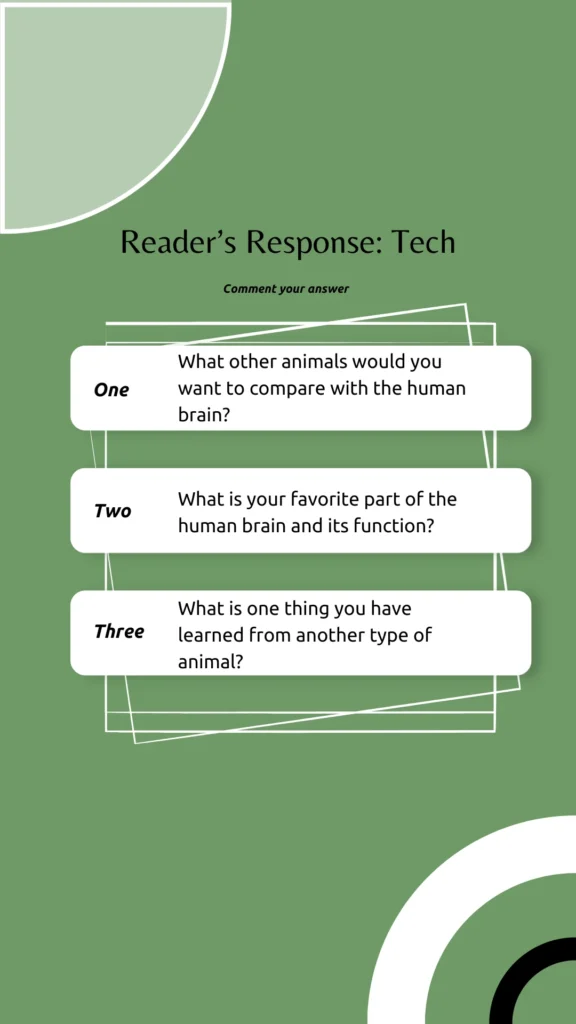
Dogs, crayfish and naked mole rats oh my: What can we learn from other creatures of the wild?
Seth Atkins, Editor in Chief
Beneath the coarse soil, in the crystal waters or high in the crisp sky, animals are everywhere. But with a tighter lens, humans can learn how the brain functions from the animals seen in the surrounding wilderness.
It is unethical to go into a living human being’s brain and study it. So, animals provide a way to pick at some form of a brain. Through dissections, we can see how different animals react to different kinds of drugs.
Studying the brains of crayfish can help with understanding drug addiction. The brain of the crayfish is tiny but holds valuable information. One thing that you are going to see is some similarities in structure with the crayfish.
Adebobola Nathaniel, professor of biology said, “There is the aspect that has to do with reward. What is it that you get from it (the drug), what does this sensitize so you have those neurotransmitters that we can see even in crayfish that are present in humans.”
There is also an element to how crayfish can present a sense of reward in their behavior. This is just like how humans show a sense of accuracy/reward when taking a drug.
Nathaniel also mentions how there can be a sense of withdrawal in crayfish as they crouch in a corner. She said, “That’s just to tell you something as small as crayfish, you can see some similarities.”
This is reminiscent to one of the main parts of the human brain. The cerebrum, which is the biggest part of the brain, is the part that has all the squiggles and grooves that is well known, but this part is in two hemispheres.
Think about when you try to fix your hair blowing in the wind, and your hand glides across the top of your head, that’s where the cerebrum is located.
Talking about the cerebrum, biology Professor Randall Moss said, “That’s where most of all of the cognitive function happens. So, when we think about thought processing and emotion and even initiating movement, processing, hearing processing and vision all that happens in the cerebrum.”
Speaking of emotions, in other animals like the dog, we can learn about how the human brain may react to mental illnesses. Senior biology student Colin McCarter said, “We have dog models for different types of mental illnesses like PTSD, depression and anxiety.”
For example, we have learned the how separation anxiety in dogs can have its effects. Dogs can express their anxiety through barking, pacing and even urinating.

Funny enough, mammalian, known as mammals, brains have the same ratio of neurons to supporting cells. In fact, you brain has the process of actually firing a neuron. What happens is an environmental stimulus causes a neuron to fire an electrical signal.
Furthermore, the thinking tank atop of your head is made up of two types of cells — neurons and glial cells. Neurons are the functional cells of the nervous system. They send messages with information very rapidly. Then, the glial cells are the supporting cells that monitor the chemical environment.
Through animals like a naked mole rat, we can learn about disease in relation to the human brain. In this instance, the focus is on the stroke. A stroke is when there are insufficient oxygen levels. There is a clot that is preventing oxygen from getting into the brain, and that is when stroke sets in.
In dealing with getting information to the brain, in the human brain we have the brainstem. This part takes sensory information from our skin or organs, like blood pressure readings and temperature readings, and it compares it to a setpoint. Then it sends information to regulate our heart rate or blood pressure. Breathing is also monitored by the brainstem.
The brainstem is the connector from the cerebrum of the brain to the spinal cord and cerebellum. It is like the connector from the wall to the television.
Speaking of cerebellum, this is the piece that sits in the back of the brain. The cerebellum conducts movement. It also helps with balance and motor skills.
Without this guy, walking all the hills and valleys here at North Greenville would be a challenge to say the least.
What you find in the naked mole rat, they can deal with very low supply of oxygen throughout their lives. Therefore, it relates to how this can give information on the treatment of stroke.
Nathaniel said, “How is it that the mole rat they live in burrows like all through their lives? They can deal with things as low as 3% oxygen. And that is something that humans cannot do.”
The goal is to look at how naked mole rats can survive without oxygen and then without them having a stroke. In the research, often asked questions being studied are what are the factors responsible for that? And how can it translate that into the management of stroke?
Researching animals in relation to the human brain can show God as ultimate maker. Even through different creatures, brain structure and function can intertwine to become similar.
Moss said, “God’s fingerprint is conserved and so He used a lot of the same framework in how animals are made. I think, in some ways, it’s because he’s the creator and just like an artist would have the same kind of brushstroke or the same kind of detail in their writing, right God has in creation is evidence for a designer.”
It is also important to remember that no animal is like humans.
McCarter said, “The human brain is one of the most amazing aspects of God’s creation. In my opinion, it is part of what really shows how humans are the Imago Dei (image of God). While we learn a lot from the process of other animals, we’ve also learned that the human brain has a significantly more developed frontal lobe and prefrontal cortex.”
This means in practical terms, humans have much more capacity for things such as emotion, empathy, logic and reasoning than our animal counterparts. McCarter said, “God is an emotional being and He has made us the same.”
But God placed the many animals and plants around to be studied, understood and taken care of. Human bodies are made to interact to the environment around, which includes animals.
Nathaniel said, “That’s the beauty of how God made us. God wants us to learn one thing or another from other creatures.”
